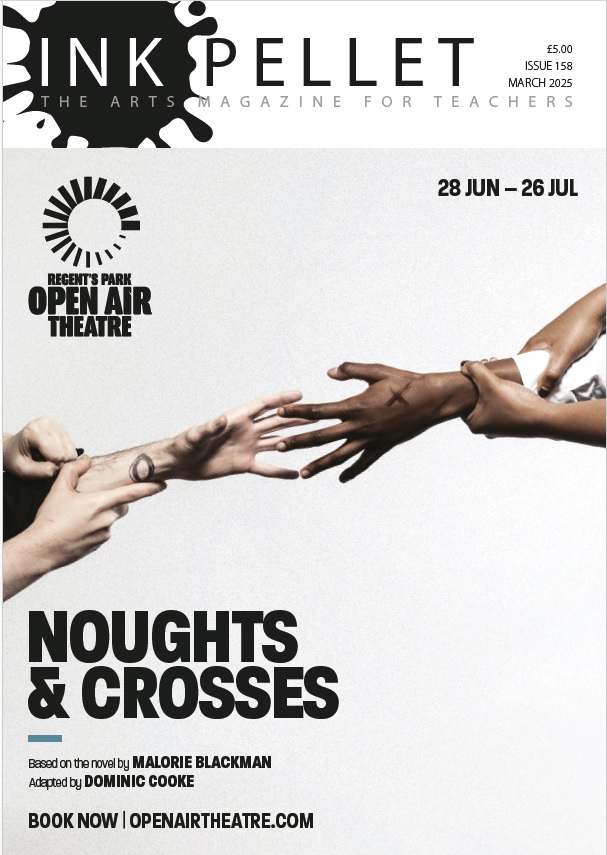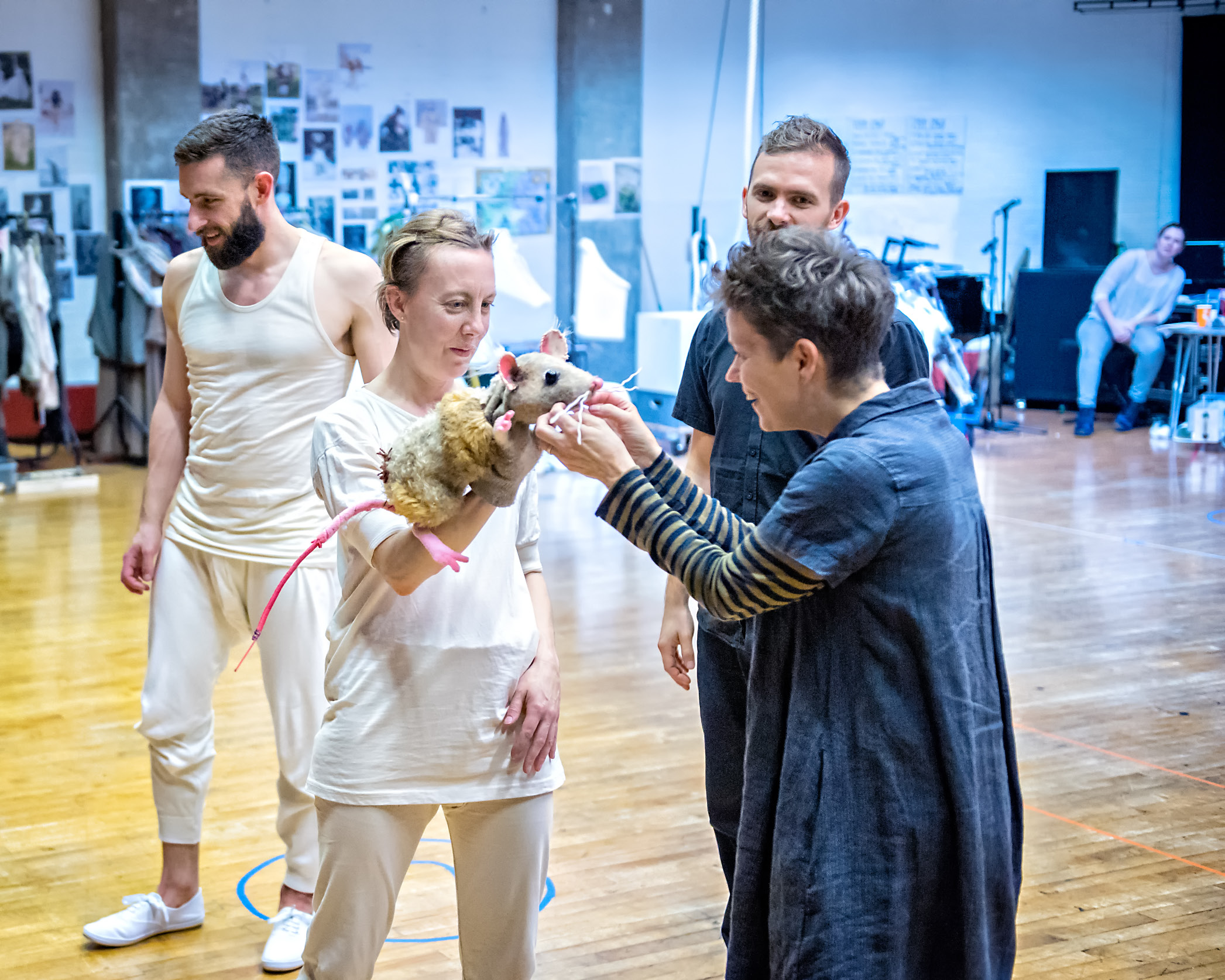This Christmas, Sally Cookson will be adapting The Lion, the Witch and the Wardrobe at the West Yorkshire Playhouse. Mark Glover spoke to the innovative director to discuss nostalgia, story-telling and the pressures of re-working such a classic book.
Few stories have captured the imagination like CS Lewis’ The Lion the Witch and the Wardrobe; four war-time children – evacuees sent to the country – find themselves (via a wardrobe) in a snowy, magical world inhabited by mythical beasts, talking lions and evil witches. It’s a tale recognised by children and adults alike and continues to resonate some 70 years since it was first published.
Lewis wrote the book in 1950, the first instalment of seven parts that make up the Chronicles of Narnia. The final story, The Last Battle, came out in 1956 and cemented the series as a classic not just of children’s literature but literature generally.
As a young boy the Irish-born Lewis was fascinated by nature. He read the Beatrix Potter books enchanted by her world of talking animals. He also absorbed Greek literature and mythology and developed a passion for the Icelandic Sagas; epic, snow-laden tales of the country’s earliest settlers, perhaps influencing the frozen landscapes of Narnia.
“I think CS Lewis was a massive fairy tale fan,” says Sally Cookson, who is adapting the book for the West Yorkshire Playhouse this Christmas. “He saw the importance of fantasy and fairy tale stories to lift us out of our ordinary lives and see the wonder that can trigger our imagination. To me, this is a massively important part of why this, The Lion the Witch and the Wardrobe is so special.”
Like Lewis, Sally has a genuine intrigue and wonder about the possibilities of all things fantastical; magic, mystical worlds and fairy tales; its ability to transport a reader or audience to somewhere completely different. She is the obvious person to take on this rather daunting adaptation and those that know Sally’s work will be rubbing their hands together in anticipation of her latest project.
The director, who founded the Bristol Old Vic’s youth theatre, has a skill in transforming classic family shows; creating bold, eye-opening adaptations that challenge the audience ever so slightly, while retaining the charm and nostalgia of the original. In 2016, her version of Peter Pan at the National Theatre London had Wendy not Peter as the main protagonist and her 2015 gender-swapping version of Sleeping Beauty had a prince being rescued by a princess.
When I probe her for what surprises she might have in store for this project she’s not giving too much away, but assures me that those watching will have an important part to play. “I’m working very hard to make sure that the audience feel part of it. We’ve got a couple of moments that rely on the audience very heavily.” she teases.
Audience immersion will be aided by a significant change to the West Yorkshire Playhouse’s famous quarry theatre where it will be transformed into an ‘in-the-round’ stage – the first time in its 47-year history. “What that immediately does is that it wraps the audience in the space,” Sally explains. “It feels as if everybody is holding hands together and holding the story in their arms and are in it and a part of it. To feel the audience included in the story is going to be very, very exciting. Especially, with some of the audience members, this might be their first experience of the theatre.”
Sally also drafted in designer Rae Smith for the production, known for her wonderful work on the set of War Horse, another adaptation of a classic children’s book. I ask Sally how the collaboration worked between herself and Rae.
“She (Rae) understands how to respond to the story and not impose anything until we all start investigating it together,” Sally says. “She’s the most brilliant artist. I spent a long time with her during the summer where we just met-up, usually at her house, and we’d drink lots of tea and we would talk about the story and the characters and then we’d gossip about other things, and then as we were chatting, she’d just start sketching; she’d draw these incredible pictures that just came out of the conversation and then out of these sketches, that then inspired me.”
This relaxed collaboration between actors, designers and the team is an important part of Sally’s creative process. During rehearsals actors are allowed to grow into the role, with gentle guidance, Sally softly encourages them to where they need to be. She cites a recent dress-up day as an example, when the actors begin to discover the characters through their costumes. “Rae brought in a load of costumes for all the characters,” she says. “We had some idea of what we were going to put to them (the actors). I was very keen we didn’t impose something on them until the actors got into the room. The actors or the characters put on clothes and costumes that they felt was appropriate for their character and it was so full of joy and wonder and everyone was so energised and excited.”
Playfulness and excitement is another hallmark of Sally’s work. A feeling of nostalgia is carried across in her plays, a safe and comforting place that perhaps our modern-day world does not really allow time for. “It makes me very sad that we still can’t play like children as adults,” she says. “Sadly, I feel as though we’ve repressed that part of our nature as we get older. It’s society that tells us that being grown-up means we have to behave in a certain way. CS Lewis understood the importance of being a child all the way through your life. I hope that our version is going to tap into that.
Choosing to adapt heavyweight classics such as Peter Pan, Sleeping Beauty and The Lion the Witch and the Wardrobe carries with it a fair weight of responsibility. In the case of the latter, a favourite story of many (including this writer) there is an added pressure of making sure the adaptation does the book justice.
“A story like this, audiences come with certain expectations. For a lot of people, this will be one of their favourite stories,” she says. “It’s a massive challenge. We’re only at the beginning of week three of rehearsals and there are iconic episodes that we have got to try and meet so as not to disappoint the audience.”
It’s a responsibility Sally is more than willing to bear. She is obviously passionate and cares deeply about the production but given the play’s Christmas run, admits she is feeling the pressure a little bit more. “I always do, she says. “Especially at Christmas. It’s often people’s yearly outing to the theatre. I do feel pressure of course; massive, massive pressure – sleepless nights and all of that.”
Before speaking to Sally, I had a look online to conduct some research. I came across another interview with The Guardian ahead of last year’s Peter Pan production at The National, in London. In it, Sally offers her definition of the best kind of family theatre: “It has to have lots of different elements. It’s got be a fantastic story. You’ve got to be on the edge of your seat. There’s got to be an emotional heart and you’ve got to care. The best stories remind us what it is to be human.” I read the quote back to her at the beginning of our chat and ask her if The Lion, the Witch and the Wardrobe will tick all those boxes? Her one-word answer is resounding: “Absolutely”, she affirms.
It’s the final sentence in Sally’s quote to the newspaper that catches my attention; “The best stories remind us what it is to be human.” It’s a great statement and amidst talking lions and evil witches and other fantastical beasts this adaptation, I’m sure, will leave the audience – young and old – feeling very much alive.
The Lion the Witch and the Wardrobe runs from 29 November to 21 January at the West Yorkshire Playhouse, Leeds. www.wyp.org.uk



